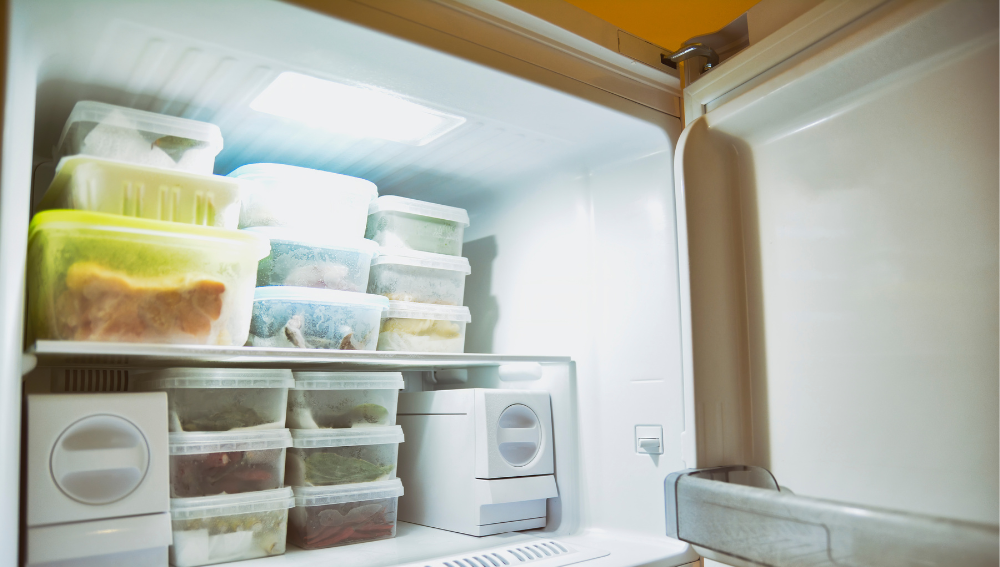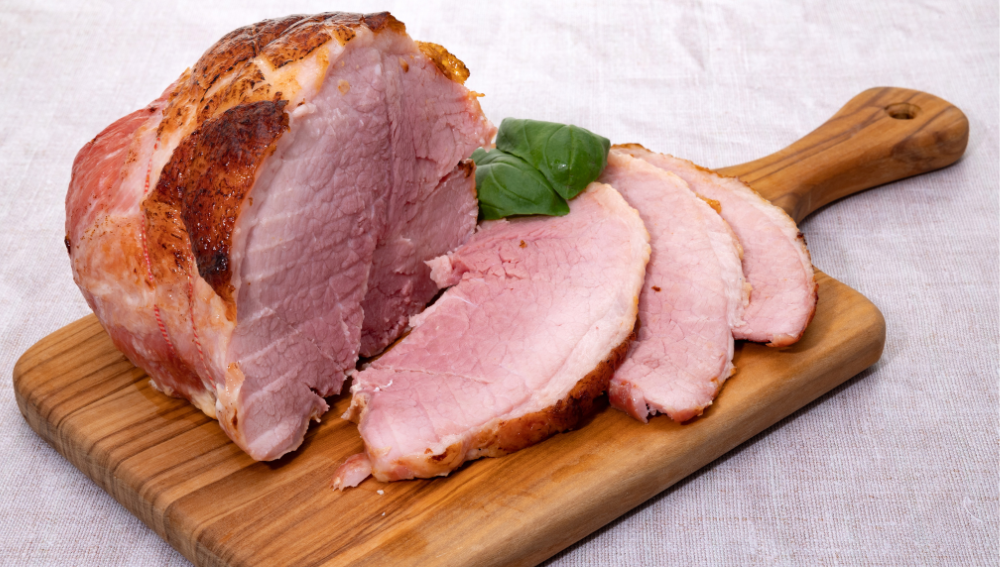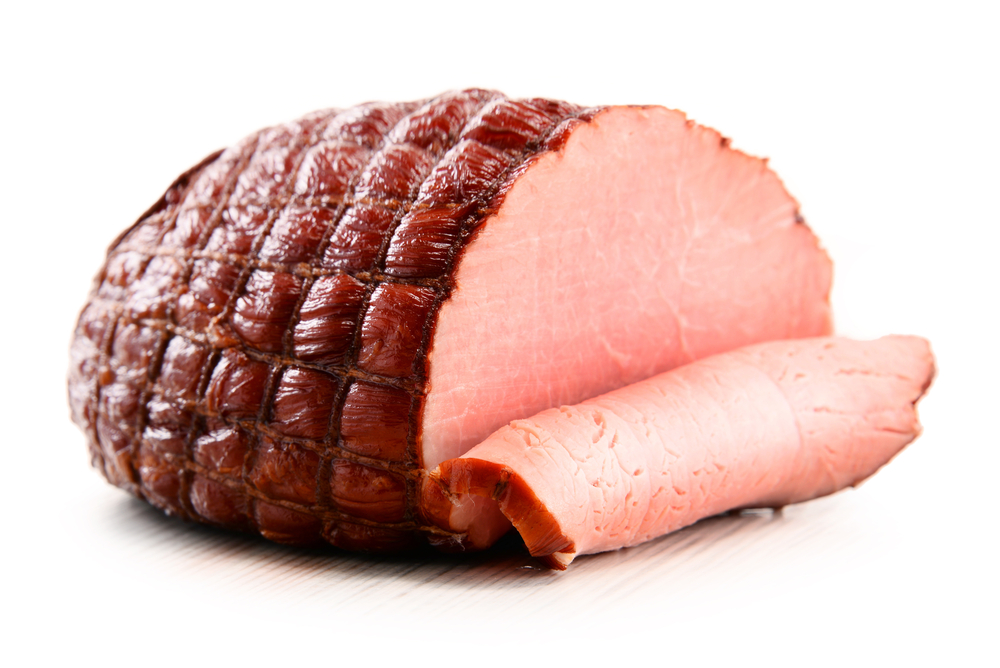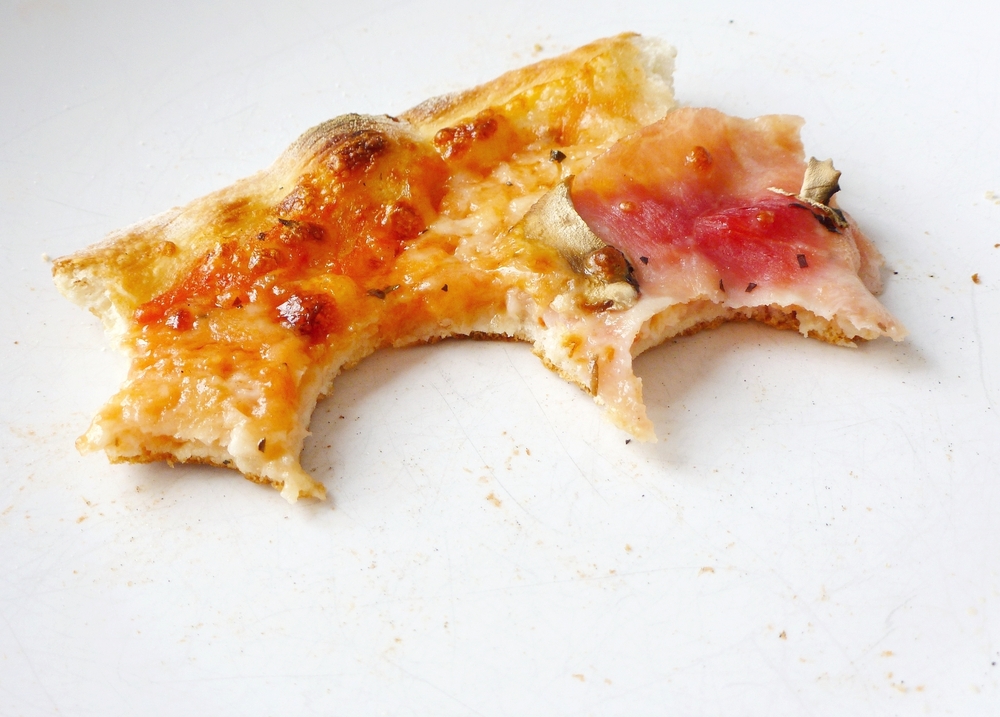When it comes to storing leftover cooked ham, it’s not always clear what the best practices are for freezing and refreezing. Some people may wonder if it’s safe to refreeze cooked ham, while others may be unsure of the optimal storage methods to ensure the ham stays fresh and flavorful. I
n this article, we’ll explore the ins and outs of freezing and refreezing cooked ham, so you can feel confident in your storage choices and get the most out of your leftovers.
First, we’ll cover the basics of freezing and refreezing, including what happens to food when it’s frozen and how to properly thaw and refreeze cooked ham.
We’ll also discuss the potential impact of refreezing on the quality and texture of the ham, so you can make an informed decision about whether or not to refreeze your leftovers. Finally, we’ll provide some tips for proper storage and creative ways to use up any leftover ham you may have.
Key Takeaways
- It is safe to refreeze cooked ham, but it is important to follow proper thawing and refreezing methods.
- Refreezing may impact the texture and quality of the ham, so it’s important to consider this when deciding whether or not to refreeze.
- Proper storage and portioning can help extend the shelf life of cooked ham and prevent freezer burn.
Understanding the Basics of Freezing and Refreezing

Freezing is a great way to preserve food for later use. It slows down the growth of bacteria and other microorganisms that can cause food to spoil. However, there are some important things to keep in mind when it comes to freezing and refreezing ham.
When you freeze ham, the water inside the meat turns into ice crystals. These ice crystals can cause the meat to become dry and lose some of its flavor.
To minimize this, it’s best to freeze ham as quickly as possible. You can do this by setting your freezer to its coldest setting and wrapping the ham tightly in plastic wrap or aluminum foil.
If you thaw ham and then decide you don’t want to use it, you can refreeze it. However, you should be aware that each time you freeze and thaw ham, it loses some of its quality. Refrozen ham may be drier than ham that has only been frozen once.
It’s important to note that you should only refreeze ham if it has been thawed in the refrigerator. Other thawing methods, such as leaving it out on the counter or using a microwave, can increase the risk of bacterial growth and make the ham unsafe to eat.
To ensure the safety of your food, ham should be refrozen within three days of thawing. If you’re unsure whether your ham is still safe to eat, use your senses. If it looks, smells, or tastes off, it’s best to err on the side of caution and throw it out.
In summary, freezing and refreezing ham is possible, but it can affect the quality of the meat. To minimize this, freeze ham as quickly as possible and only refreeze it if it has been thawed in the refrigerator. Be sure to refreeze ham within three days of thawing and use your senses to determine whether it is still safe to eat.
The Impact of Refreezing on Cooked Ham

Refreezing cooked ham is a common practice that helps to extend the shelf life of the meat. However, it is essential to consider the impact of refreezing on the quality, texture, moisture, and flavor of the ham.
When ham is frozen and thawed, ice crystals form and melt, causing the meat to lose moisture. Refreezing can exacerbate this process, resulting in drier ham that may have a tougher texture. Additionally, refrozen ham may be more susceptible to freezer burn, which can cause the meat to dry out and develop an off-flavor.
To minimize the impact of refreezing on cooked ham, it is crucial to follow proper thawing and refreezing techniques. For example, ham should be thawed in the refrigerator and refrozen within three days of thawing. This helps to minimize the formation of ice crystals and reduce the loss of moisture.
It is also important to store refrozen ham properly to maintain its quality and flavor. For best results, wrap the ham tightly in plastic wrap or aluminum foil and place it in an airtight container before freezing. This helps to prevent freezer burn and preserve the ham’s moisture and flavor.
In summary, while it is possible to refreeze cooked ham, it is important to consider the impact of refreezing on the quality, texture, moisture, and flavor of the meat.
By following proper thawing and refreezing techniques and storing the ham correctly, it is possible to minimize the impact of refreezing and enjoy high-quality, flavorful ham.
Proper Methods for Freezing Cooked Ham

To properly freeze cooked ham, it is important to follow a few simple steps to ensure that the meat stays fresh and free from freezer burn.
Here are some recommended methods for freezing cooked ham:
1. Wrap the ham tightly
When preparing the cooked ham for freezing, it’s important to use plastic wrap, freezer paper, or heavy-duty aluminum foil to tightly wrap the meat. Make sure to eliminate as much air as possible. Double wrapping is recommended to ensure the ham stays fresh and free from freezer burn.
2. Use an airtight container
Another way to freeze cooked ham is to place it in an airtight container. This method is particularly useful for sliced ham or diced ham. Make sure to leave some space at the top of the container to allow for expansion during freezing.
3. Vacuum seal the ham
For longer storage, vacuum sealing the cooked ham is a great option. This method removes excess air and moisture, which can help prevent freezer burn. Vacuum-sealed ham can be stored in the freezer for up to 6 months.
4. Label and date the package
No matter which method you choose, it’s important to label and date the package. This will make it easier to identify the ham later and ensure that it’s used before it goes bad.
5. Freeze the ham promptly
To ensure the best quality, freeze the ham as soon as possible after cooking. This will help prevent the growth of bacteria and other harmful microorganisms.
By following these simple steps, you can freeze cooked ham safely and effectively. Whether you choose to use plastic wrap, an airtight container, or a vacuum sealer, proper packaging and labeling will help ensure that your ham stays fresh and flavorful for months to come.
Defrosting and Refreezing: A Detailed Guide

When it comes to defrosting and refreezing cooked ham, there are a few important things to keep in mind to ensure the safety and quality of the meat. Here is a detailed guide on how to defrost and refreeze cooked ham properly:
Defrosting Cooked Ham
There are several methods to defrost cooked ham, but the safest and most recommended method is to defrost it in the refrigerator. This method allows the ham to thaw slowly and evenly, reducing the risk of bacterial growth and preserving the flavor and texture of the meat.
To defrost cooked ham in the refrigerator, simply transfer the frozen ham from the freezer to the refrigerator and let it thaw for 24 to 48 hours, depending on the size of the ham. Once the ham is fully thawed, it can be stored in the refrigerator for up to three to five days before cooking or refreezing.
If you need to defrost cooked ham quickly, you can also use a microwave or cold water bath. However, these methods are not recommended as they can cause uneven thawing and increase the risk of bacterial growth.
Refreezing Cooked Ham
Once cooked ham has been thawed, it can be refrozen if it has been handled properly and has not been left at room temperature for more than two hours. However, it is important to note that refreezing cooked ham can affect its texture and flavor, and may lead to a loss of quality.
To refreeze cooked ham, it is best to divide it into smaller portions and wrap them tightly in freezer-safe bags or containers. Label the bags or containers with the date and contents and store them in the freezer for up to two months.
It is important to note that refreezing cooked ham multiple times can also affect its quality and safety. It is recommended to only refreeze cooked ham once and to consume it within a reasonable time frame after refreezing.
In summary, defrosting and refreezing cooked ham requires proper handling and storage to ensure its safety and quality. Always defrost cooked ham in the refrigerator and only refreeze it once if it has been handled properly.
How to Identify and Deal with Freezer Burn
Freezer burn occurs when frozen food loses moisture and oxygen moves in to take its place. This results in drier, tougher, and often discolored food. Freezer burn affects the quality of food but not its safety.
It can happen to any food that is not stored correctly in the freezer, including cooked ham.
To identify freezer burn, look for the following signs:
- Discoloration: Freezer-burned food often has white or grayish spots on the surface. This is caused by the moisture loss from the food.
- Dryness: The texture of freezer-burned food is dry and tough.
- Flavor changes: Freezer-burned food may have a bland or off-flavor due to the loss of moisture.
If you notice any of these signs, it’s best to discard the freezer-burned portion of the food. However, if the freezer burn is limited to a small area, you can cut it off and use the rest of the food.
To prevent freezer burn, follow these tips:
- Wrap food tightly: For best results, triple-wrap before you freeze: A layer of plastic wrap (or reusable freezer paper), a layer of foil, and then a freezer bag should do the trick. This will help prevent moisture loss and freezer burn.
- Remove as much air as possible before sealing: If you’re dealing with an open carton of ice cream, cover the container with plastic wrap before putting the lid back on. This will help prevent air from getting in and causing freezer burn.
- Store food at the right temperature: Keep your freezer at 0°F (-18°C) or below. Anything warmer than that can cause freezer burn.
By following these tips, you can prevent freezer burn and keep your cooked ham and other frozen foods fresh and tasty.
The Role of Packaging and Portioning

When it comes to refreezing cooked ham, proper packaging and portioning play a crucial role in maintaining its quality and flavor. Here’s what you need to know:
Packaging
The type of packaging you use can make a big difference in the quality of your refrozen ham. Here are some options to consider:
- Foil: Wrapping your ham tightly in foil can help prevent freezer burn and keep it moist. However, it may not be the best option for long-term storage.
- Freezer bags: Freezer bags are a great choice for storing ham as they are specifically designed to prevent freezer burn. Make sure to remove as much air as possible before sealing the bag.
- Aluminum foil and plastic wrap: If you’re short on freezer bags, you can use a combination of aluminum foil and plastic wrap to wrap your ham tightly. This will help prevent freezer burn and keep it fresh.
Portioning
Another important factor to consider when refreezing cooked ham is portioning. Here’s why:
- Smaller portions: Refreezing a large ham can result in loss of quality and flavor. Consider cutting the ham into smaller portions before freezing. This will not only make it easier to defrost and use, but it will also help preserve its quality.
- Package size: When portioning your ham, consider the size of the package you’re using. It’s best to use smaller packages that are just the right size for your needs. This will help prevent waste and ensure that your ham stays fresh.
Overall, proper packaging and portioning are key to maintaining the quality and flavor of your refrozen ham. By following these tips, you can enjoy delicious ham for months to come.
Understanding Different Types of Ham

Ham is a popular meat that is enjoyed by many people around the world. There are different types of ham, each with its unique flavor, texture, and cooking method.
Understanding the different types of ham will help you choose the right one for your recipe and ensure that you get the best results.
Sliced Ham
Sliced ham is a type of ham that is pre-cooked and sliced into thin pieces. It is usually sold in vacuum-sealed packages and can be found in most grocery stores. Sliced ham is a convenient option for sandwiches, salads, and other quick meals. It can be eaten cold or heated up in the microwave or oven.
Spiral Ham
Spiral ham is a bone-in ham that has been pre-cooked and sliced into a spiral shape. It is usually sold with a glaze packet and can be found in most grocery stores. Spiral ham is a popular option for holiday meals and special occasions. It can be heated up in the oven and served with the glaze packet for added flavor.
Fresh Ham
Fresh ham is a type of ham that has not been cured or smoked. It is usually sold with the bone-in and can be found in specialty meat shops or ordered online. Fresh ham has a milder flavor than cured or smoked ham and can be cooked in a variety of ways, including roasting, grilling, or smoking.
Bone-in Ham
Bone-in ham is a type of ham that is sold with the bone still intact. It can be cured or uncured and can be found in most grocery stores. Bone-in ham is a popular option for holiday meals and special occasions. It can be cooked in a variety of ways, including roasting, grilling, or smoking.
In conclusion, understanding the different types of ham will help you choose the right one for your recipe and ensure that you get the best results. Whether you prefer sliced ham for a quick meal or bone-in ham for a special occasion, there is a type of ham that will suit your needs.
Proper Storage and Shelf Life of Cooked Ham
Cooked ham is a versatile and delicious meat that can be used in a variety of dishes. However, it is important to store it properly to ensure its safety and quality.
When stored properly, cooked ham can last for several days in the refrigerator and several months in the freezer.
Shelf Life
The shelf life of cooked ham depends on how it is stored. If it is stored in the refrigerator, it can last for up to 5 days. If it is stored in the freezer, it can last for up to 6 months.
It is important to note that these are general guidelines and that the shelf life may vary depending on factors such as the temperature of the refrigerator or freezer and how the ham was prepared.
Stored Properly
To ensure that cooked ham lasts as long as possible, it is important to store it properly. Cooked ham should be stored in an airtight container or wrapped tightly in plastic wrap or aluminum foil.
It should be stored in the coldest part of the refrigerator or freezer, which is usually the back of the refrigerator or the bottom of the freezer.
Refrigerator
Cooked ham should be stored in the refrigerator at a temperature of 40°F or below. If the ham is left at room temperature for more than 2 hours, it should be discarded. It is important to note that the longer cooked ham is stored in the refrigerator, the more its quality will deteriorate.
Freezer
Cooked ham can be stored in the freezer for up to 6 months. To prevent freezer burn, it should be wrapped tightly in plastic wrap or aluminum foil and placed in an airtight container or freezer bag.
It is important to label the ham with the date it was frozen so that you can keep track of how long it has been stored in the freezer.
Overall, proper storage is key to ensuring the safety and quality of cooked ham. By following these guidelines, you can enjoy delicious cooked ham for days or even months after it was prepared.
Health and Safety Considerations
When it comes to refreezing cooked ham, health and safety should be the top priority. Refreezing ham can be safe, but only if done properly.
Here are some important considerations to keep in mind:
- Bacterial Growth: The main concern with refreezing cooked ham is the risk of bacterial growth. When meat is thawed, bacteria can begin to multiply rapidly if it is left at room temperature for too long. This can lead to spoilage and foodborne illness if the meat is not cooked to a safe internal temperature.
- Spoilage: Refreezing cooked ham can also lead to spoilage if it is not properly stored. If the ham is left at room temperature for too long, it can spoil and become unsafe to eat. To prevent spoilage, it is important to thaw and refreeze the ham in the refrigerator.
- Consume within a reasonable time: It is recommended to consume refrozen ham within a reasonable time frame to ensure its safety and quality. The Spruce Eats suggests that ham should be refrozen within three days of thawing to ensure its safety.
To ensure the safety of refrozen cooked ham, it is important to follow proper food safety guidelines. Using a meat thermometer to check the internal temperature of the ham is a good way to ensure that it is safe to eat.
The internal temperature of cooked ham should reach at least 145°F (63°C) before it is considered safe to consume.
If you need to cook a frozen ham, it is important to follow proper cooking times and temperatures to ensure that it is cooked through and safe to eat. The cooking time will depend on the size of the ham, so it is important to consult a reliable source for cooking instructions.
In summary, refreezing cooked ham can be safe if done properly. To ensure its safety, it is important to follow proper food safety guidelines, use a meat thermometer to check the internal temperature, and consume within a reasonable time frame.
Creative Ways to Use Leftover Ham
Leftover ham is a versatile ingredient that can be used in a variety of dishes. Here are some creative ways to use leftover ham:
Soups
One of the most popular ways to use leftover ham is to make soup. Ham adds a rich, smoky flavor to soups and stews.
Some popular soups that can be made with leftover ham include split pea soup, lentil soup, and bean soup. Simply chop up the leftover ham and add it to the soup during the last few minutes of cooking.
Sandwiches
Leftover ham can also be used to make delicious sandwiches. One classic sandwich is the ham and cheese sandwich, which can be made with any type of bread and cheese. Another popular sandwich is the Monte Cristo, which is made with ham, cheese, and French toast.
Quiche
Leftover ham can also be used to make quiche. Quiche is a savory pie made with eggs, cheese, and a variety of fillings. Ham and cheese quiche is a classic recipe that is perfect for using up leftover ham.
Scalloped Potatoes
Scalloped potatoes are a popular side dish that can be made with leftover ham. Simply layer sliced potatoes and ham in a roasting pan, cover with a creamy sauce, and bake in the oven until the potatoes are tender and the top is golden brown.
Holidays
Leftover ham is a staple of holiday meals, and there are many creative ways to use it. One popular dish is ham and cheese sliders, which are mini sandwiches made with ham, cheese, and a sweet glaze.
Another popular dish is ham and pineapple skewers, which are a sweet and savory appetizer that is perfect for holiday parties.
In conclusion, leftover ham is a versatile ingredient that can be used in a variety of dishes. Whether you are making soup, sandwiches, quiche, scalloped potatoes, or holiday dishes, leftover ham is a great way to add flavor and protein to your meals.
Related post: Can You Refreeze Tamales
Frequently Asked Questions
How many times can you safely refreeze cooked ham?
It is generally safe to refreeze cooked ham once. Refreezing it more than once can increase the risk of bacterial growth and spoilage. It is recommended to only thaw the amount of ham that will be consumed to minimize the need for refreezing.
How long can cooked ham be refrozen?
Cooked ham can be refrozen for up to two months after the initial freezing. However, the quality of the ham may deteriorate over time, resulting in a less desirable taste and texture.
Can cooked ham be safely refrozen in the fridge?
Yes, cooked ham can be safely refrozen in the fridge. It is important to thaw the ham in the fridge and then refreeze it promptly. This will help minimize the risk of bacterial growth and ensure the safety of the ham.
Is it safe to freeze ham on the bone?
Yes, it is safe to freeze ham on the bone. However, it is important to note that the bone can affect the texture of the ham during freezing and thawing. It is recommended to remove the bone before freezing for best results.
How long can a thawed ham be stored in the fridge?
A thawed ham can be stored in the fridge for up to five days before it should be consumed or refrozen. It is important to keep the ham refrigerated at all times to prevent bacterial growth and ensure food safety.
Can spiral ham be refrozen after thawing?
Yes, spiral ham can be refrozen after thawing. However, it is important to ensure that the ham is properly thawed in the fridge before refreezing. Refreezing spiral ham may affect its texture and taste, so it is recommended to only refreeze once.







